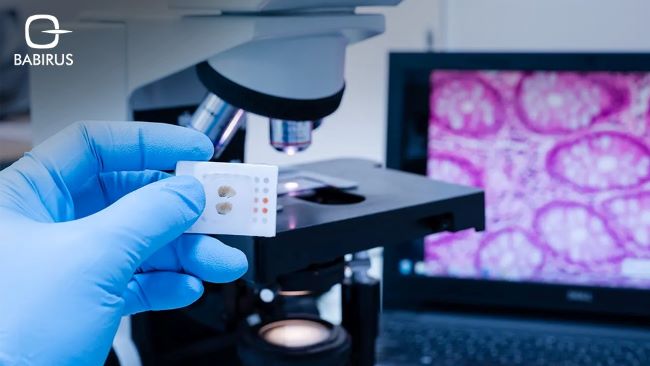Cytology (Cytopathology): What It Is & Types

Cytology is an amazing science that helps us detect diseases by simply looking at the smallest building blocks of our bodies, the cells.
Moreover, the pathologist identifies an accurate diagnosis by examining cells from bodily tissues or fluids under a microscope, to determine a diagnosis, and that helps healthcare specialists set an effective treatment plan.
Today, we are going to share with you full information about the concept of cytology, its famous types, its standard process, and its powerful role in diagnosing diseases.
Understanding Cytology:
Cytology, also known as cytopathology, is a vital field in medical diagnostics, as it is considered the first diagnosing step that helps spot different diseases through accurate and deep cell examining, including infections, inflammations, or cancer.
Moreover, cytology is not only considered a minimally invasive procedure but also can help in identifying diseases early based on specific indicated characteristics or abnormalities that point to disease and improve patient outcomes.
This efficient diagnostic tool works by analyzing cell samples from different parts of the body, and due to the small size of cells, then the cytopathology testing requires small tissue samples to perform the test, making cytology a minimally invasive diagnostic tool, with the ability to detect diseases at their earliest stages.
3 Types of Cytology:
Cytology processes or types could be divided into three main categories based on the used methods and applications to analyze samples and detect diseases in each type:
1. Exfoliative Cytology:
This method works by collecting cell samples from the body surfaces, just like skin or cervix samples which is totally considered a patient-friendly procedure.
For example, the Pap smear is a classic example of exfoliative cytology and has been an important procedure in reducing cervical cancer rates due to its role in early cancer detection, which then leads to more effective treatment and better patient outcomes.
2. Body Fluid Cytology:
This type examines cell samples from bodily fluids like urine, sputum, or pleural fluid (the fluid around the lungs), which is highly important in diagnosing infections, inflammations, and cancers affecting internal organs.
For instance, if a doctor suspects lung cancer, they might request an analysis of the pleural fluid to check for malignant cells.
3. Surgical Cytology:
This testing type is done by extracting cells from solid tissues using fine-needle aspiration (FNA), in a less invasive and faster procedure with reliable results compared to other choices, making it a preferred choice for both patients and healthcare providers.
The most important use of surgical cytology is determining if a lump in the breast or thyroid is cancerous without needing a more invasive surgical biopsy.

The Cytology Process
The Cytology Process:
As we just mentioned different collection methods are used depending on the type of cytology, and the diagnosing requirements to collect enough cells for an accurate diagnosis and personalized medicine treatment.
So, we can divide the cytology work process into these basic steps:
- The collecting of cell samples, as cells might be scraped, brushed, or aspirated using a fine needle, depending on the type of cytology.
- These cells are then fixed and stained to highlight important details.
- Pathologists examine the stained cells under a microscope, looking for any signs of disease. Moreover, advanced techniques like immunocytochemistry and molecular testing can be used for more detailed analysis.
Cytology and Disease Diagnosis:
Cytology is considered a vital tool for diagnosing diseases, especially cancers, as the results of examining cell samples can help doctors detect cancer at an early stage, which is crucial for successful treatment planning and better patient results.
Which makes cytology tests critical for diagnosing different types of cancers such as lung, bladder, cervical cancer, and thyroid cancer.
For example, liquid-based slide cytology has significantly improved early detection of cervical cancer, especially since Lituo Biotechnology offers complete solutions for more accurate and efficient analysis of cervical cells, enhancing the ability to identify precancerous conditions before they develop into full-blown cancer.
One more great thing about the cytology, is that it helps monitor disease progression and treatment response of the patient, to help doctors adjust the treatment plan effectively and ensure that patients receive the most effective therapies for their specific conditions. Leading to enhance treatment efficacy and patient care.
To end,
Cytology, with its various types and applications, is a basic player in modern medical diagnostics, with all its provided detailed cellular insights, and the early disease detection and management benefits.
Thus, we can say that cytopathology can significantly improve patient outcomes by diagnosing and detecting diseases at early stages and monitoring patient outcomes from the following treatment strategy.
